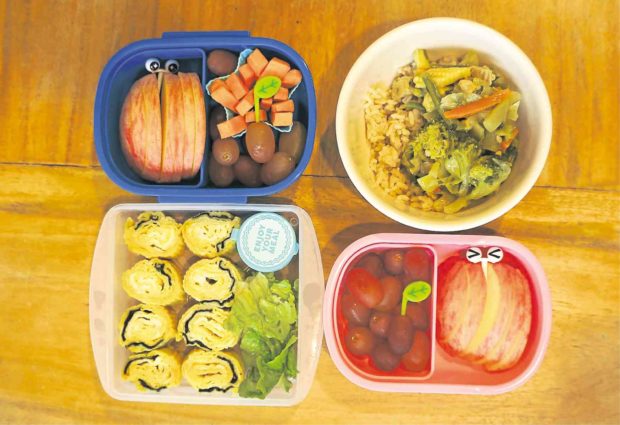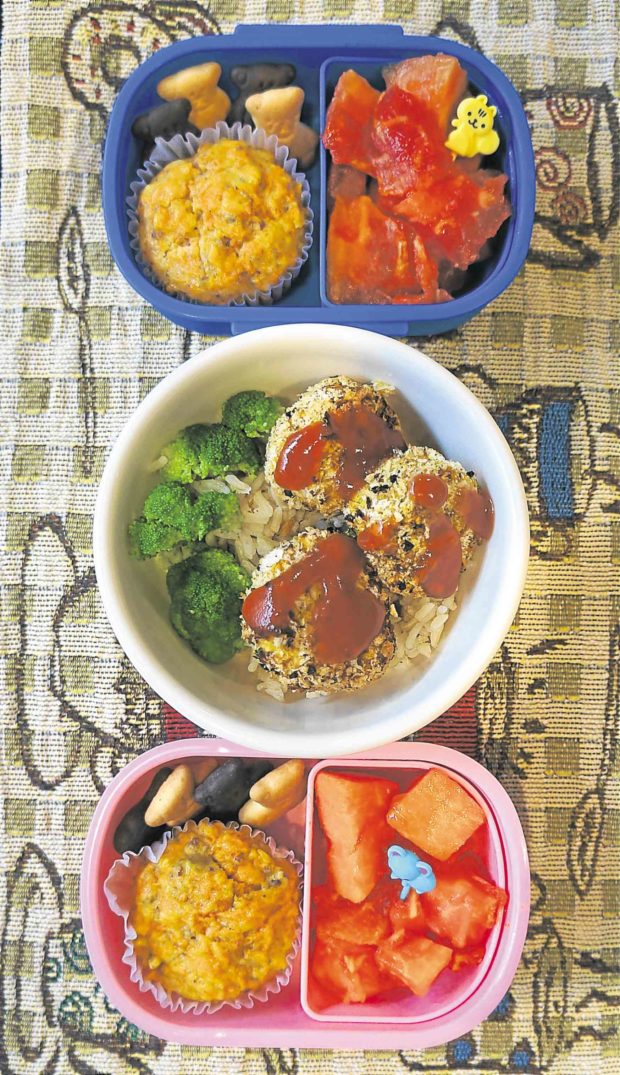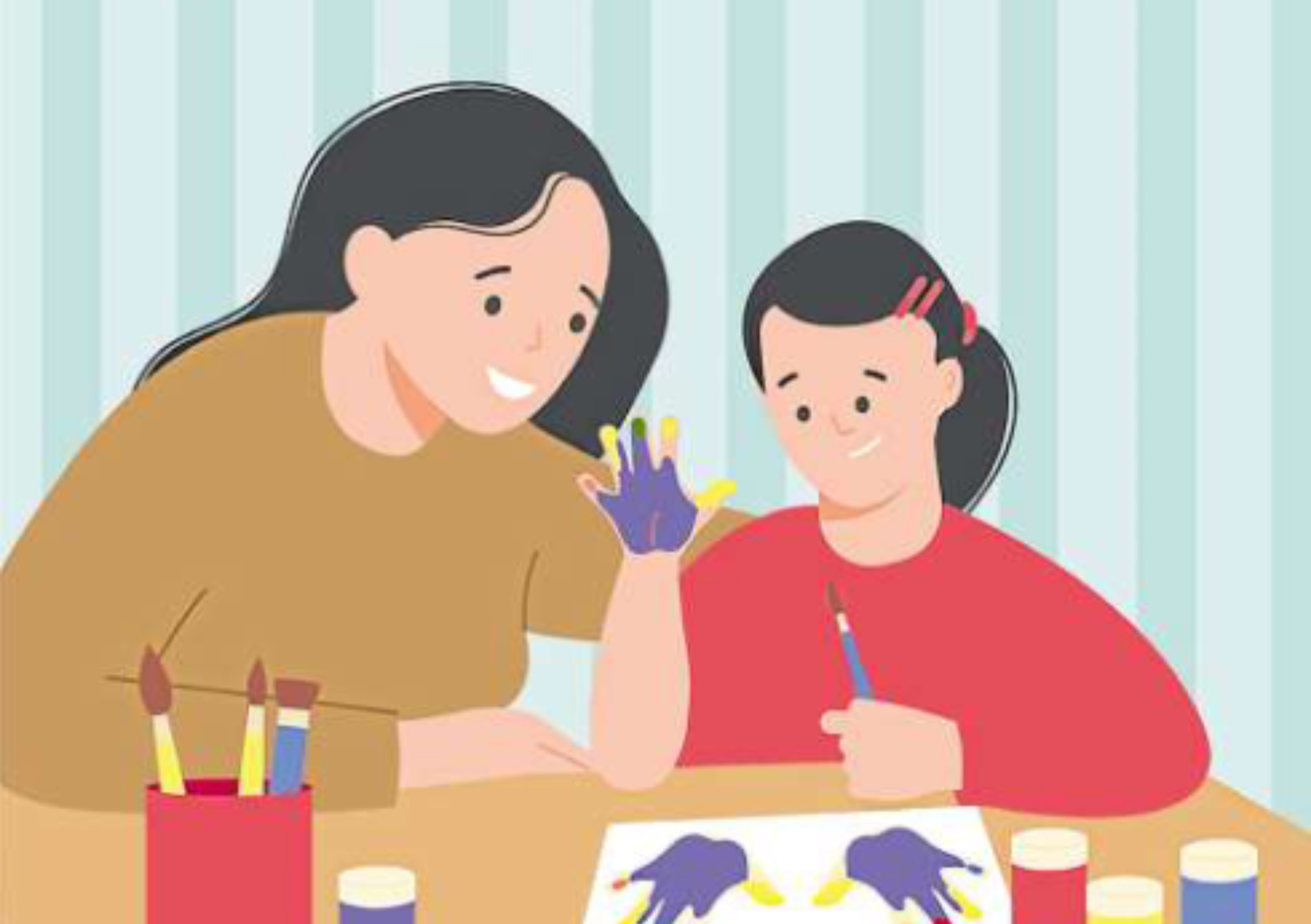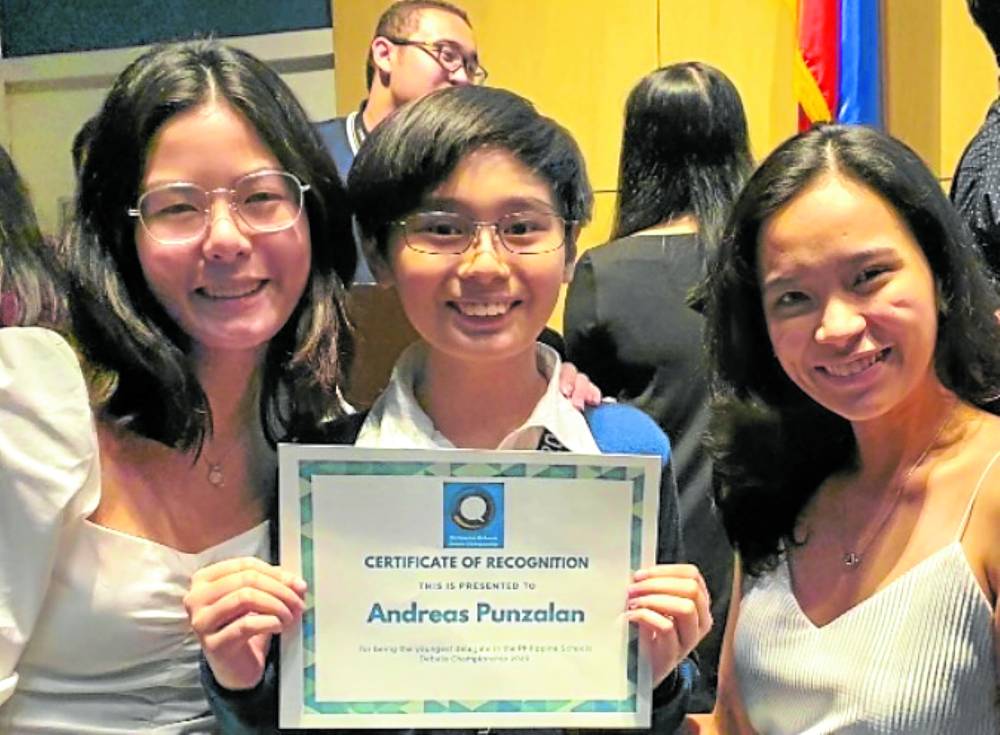

In my transition to a more plant-based lifestyle since 2010, I’ve been more of a casual vegetarian. I raised my eldest Jack to be vegetarian till he was 2, but he has been flexible since.
Since deciding to become a serious vegetarian early this year, I joined Facebook groups like Manila Vegans and Vegan for Her, among others. I plan to be fully vegan soon.
Ferch Reynoso, 37, her husband Ryan and their kids Andres, 10, and Dakila, 8, transitioned to veganism in November 2016, after participating in VegFest Pilipinas 2016, in which they were one of the merchants.
The Reynoso couple run a plant-based food manufacturing business that includes Jack’s Produce Vegan Spanish-style “sardines” and Lokalitea All Natural Turmeric Tea.
“Ryan and the kids were part of the audience in Nancy Siy’s talk on veganism, where she showed a short video clip called ‘Farm to Fridge,’ which was an exposé on what happens inside slaughterhouses. My kids, then 6 and 8, were heartbroken after seeing how the chickens, pigs and piglets were killed for fried chicken and pork chops,” Ferch Reynoso recalled.
“As we were doing event egress, my husband suggested that our family should go vegan. My youngest son told me details of what he saw in the video. He cried and kept saying he will never eat animals ever again. So, that evening on Nov. 12, 2016, our family went vegan.”
Struggle
Recounting the challenges in a vegan lifestyle, she said: “At first I struggled with what to prepare for our meals and baon. The first week was a struggle because I was not prepared to make that transition, but I stayed the course and did it for my family. I consulted with vegan friends, and they held my hand through the entire transition.
“I learned that it is still very much possible to eat dishes that we enjoyed in our prevegan days. We just have to be creative and use meat alternatives (soy/gluten-based or whole food).
“I started with the familiar vegetable dishes like pakbet, guisado, ginataan. Eventually I broadened my kitchen repertoire, making our favorite mechado and menudo with langka as meat alternative, and sweet and sour tofu.
“Soon, I was enjoying the vegan food. I created an Instagram account for it, @veganbaondiary, to document what my kids eat in school. For their snacks, they have fried banana or kamote fries, pan de sal with peanut butter, fruits and choco soya drink.”
In our own household, my husband prefers to remain an omnivore. For me and the kids, I prepare freezer-friendly meals for more variety. There are delicious recipes on The Superfood Grocer or the Forks Over Knives websites.
My 7-year-old Jack and 3-year-old Juno bring their vegetarian baon to school daily. So far, Jack’s classmates have made comments—some curious, others nasty. But he has managed to deflect the negative. In a classroom full of bacon, Spam, hotdogs and chicken nuggets with white rice, it can be tough to be different, but I suppose it builds character.
What does Reynoso advise her kids to say when friends see their food in school?

“My kids are usually excited to share their vegan baon with their classmates. They are very blunt about why they do not eat animal-derived products.
“One challenge happened in January 2018, when some teachers strongly felt that my kids were deprived of ‘good’ food and offered to buy them ‘normal’ food like pork siomai and barbecue. I was called to have a dialogue with them.
“Ryan and I shared what veganism stands for, and why our family is vegan. We brought copies of Peta’s Vegan Starter Kit.
“We were able to turn the situation around, and created an opportunity to spread awareness to the school community. We set up a vegan awareness booth during the school’s family day.”
How do they handle children’s parties? “We usually inform the hosts ahead of time that our kids are vegan and that they need not include us in the food prep,” Reynoso said.
“Some hosts are courteous enough to make special food for us and we appreciate it, although we insist that we will not come for the food, but to enjoy their company.”

At parties we attend, I don’t tell Jack and Juno what they cannot eat. I’ve seen Jack line up for cotton candy, only to leave it after a bite, or pick at his “children’s meal,” only to ask for vegetables from the adult buffet. Sometimes he’ll eat a burger, but he knows it’s only “sometimes” food.
As for the parties Reynoso herself throws, does she serve omni or strictly vegan fare? “At my husband’s 35th birthday, I arranged a surprise party for him and we served only vegan food,” she recalled.
Where do she buy their food? “We buy fresh fruits and vegetables from the wet market, our packaged vegan food from The Vegan Grocer and at Good Food Sunday Market in Mandala Park.”
What would she advise a family that wants to transition to a vegan lifestyle? “First, find in your hearts a virtue in veganism that you will stand up for and wish to benefit from: health, animal welfare, or the environment. Embrace it and hold on to it, because when challenges arise, it’s the one thing that will help you stay on track.
“Kids are naturally compassionate and will not condone any cruelty to animals, so the compassion angle is the best way to get them to consider going vegan. For parents, health is the best motivation because we would not want to become a liability if and when we become sick.
The decision is not simple, even if the facts are convincing. Animal agriculture makes a 40-percent greater contribution to global warming than all transportation in the world combined. It is the no. 1 cause of climate change.
Moving around mostly meat-centric Manila, one’s resolve has to be firm. As Jonathan Safran Foer said in his bestselling book, “Eating Animals”: “Silently, the animal catches our glance. The animal looks at us, and whether we look away (from the animal, our plate, our concern, ourselves) or not, we are exposed.
“Whether we change our lives or do nothing, we have responded. To do nothing is to do something.” –CONTRIBUTED








































